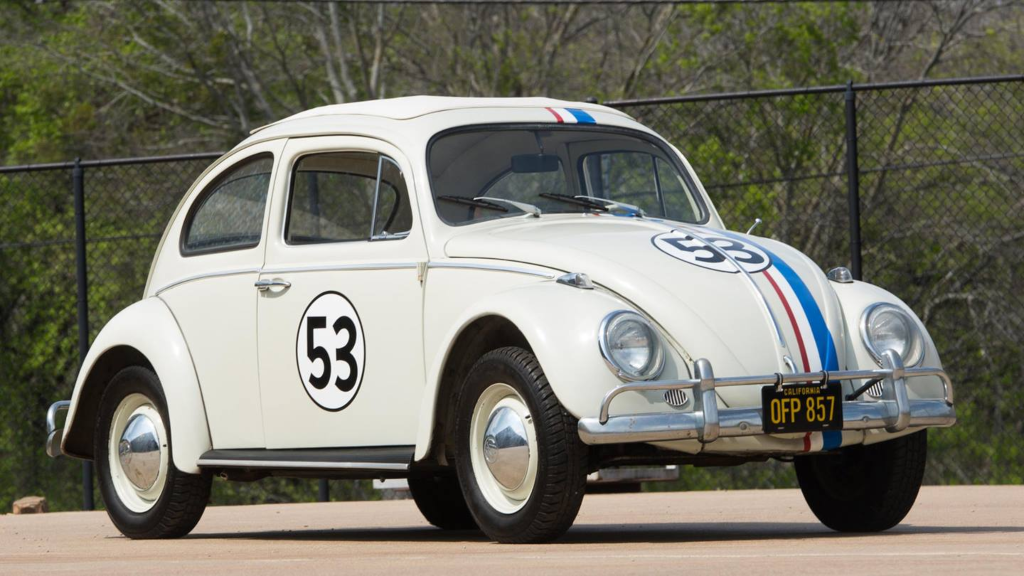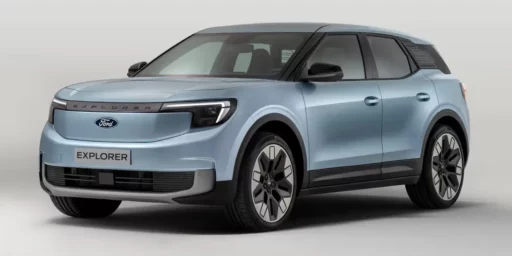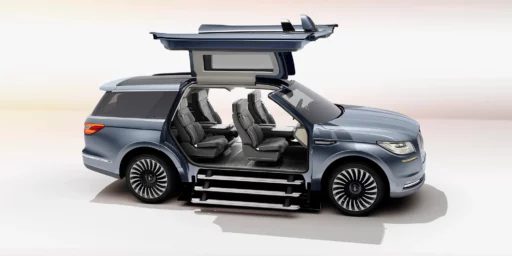The End Of The Volkswagen Beetle
Volkswagen recently announced that it was ending production of one of its most famous and recognizable models. The last Beetle rolls off the assembly line tomorrow.

Volkswagen says that it is ending production of one of its most famous and most recognizable cars:
t’s the end of an era — an era that has stretched on for a very long time, albeit with slightly different silhouettes.
The last Volkswagen Beetle, a third-generation Denim Blue coupe, will be produced in Puebla, Mexico, on Wednesday.
“It’s impossible to imagine where Volkswagen would be without the Beetle,” said Scott Keogh, president and CEO of Volkswagen Group of America. “While its time has come, the role it has played in the evolution of our brand will be forever cherished.”
An emblem of the hippie era in America, the car was marketed in the U.S. as adorably uncool. Volkswagen promoted the Beetle with cheeky advertising campaigns using slogans like “Live below your means” and “It’s ugly, but it gets you there.” In 1969, one of the vehicles cost $1,799.
Perhaps that image — and its good value — helped the auto to overcome a not-proud history: Volkswagen was founded as a project of Adolf Hitler, and its earliest cars were used for both civilian and military purposes. Volkswagen was relaunched by British authorities after World War II, and its car was rebranded as the Beetle to distance it from its Nazi heritage.
It worked. A couple decades later, the car was the anthropomorphized star of a run of movies starting with The Love Bug and on to Herbie Fully Loaded.
Volkswagen launched the New Beetle in the 1998 model year, aiming for whimsy with a built-in flower vase. It found initial success, with 80,000 sold in the U.S. in 1999.
The automaker revamped the Beetle again for 2012, but sales sputtered as time went on and SUVs became popular in the U.S.
As Volkswagen writes in a love letter to its most famous creation: “Cult is not necessarily synonymous with sales. … The Beetle has not been able to attain the global success of the new ‘Volkswagen,’ the Golf.”
The current Beetle starts at $20,895 and comes in a sporty convertible model, too. Both are ending production on Friday.
When I was growing up in the 1970s, the Volkwagen Beetle became something of a cultural icon thanks in part to the aforementioned “Herbie” movies. It also achieved commercial success as the price of gas began to increase over the course of that decade and the nation experienced gasoline shortages brought about by the OPEC oil embargos and other factors.
It also attracted attention because of the fact that it looked so different from the American cars that were on the road at the time, and because of several design differences that caught people’s attention. The most notable of these differences is the fact that the Beetle’s engine was in the rear of the vehicle rather the front, while the space in the front of the car served the same purpose that the trunk did in other vehicles.
At some point, the car seemed to become less popular in the United States, due in some part, no doubt, to competition from the Japanese-made cars from Toyota, Honda, and Nissan (first known as Datsun when they came to the U.S.) started showing up on American shores. I’m not sure if the Beetle ever completely disappeared from the American market, but I do recall that the redesign that was introduced in the late 90s sought to recapture some of that 1970s nostalgia as well as introducing things like the aforementioned convertible model.
Even to this day I still see some of the “old style” Beetles that were sold in the 70s on the road as well as the newer model that has been around for twenty years or so. In any case, it appears that this time the Beetle has fallen victim to the same thing has brought about the end of several car designs in recent years. American consumers for several years now have been gravitating toward SUV’s and their somewhat smaller cousins in the form of “crossover” vehicles like the Honda CR-V. As a result, it’s becoming less profitable for manufacturers to make traditional sedans or compact vehicles like the Beetle. That’s consumer choice in action.
In any case, say goodbye to the Beetle.






If recent VW ads on TV are any indication, we’re about to get a new (electric) reincarnation of the even-more-iconic-for-hippies VW Microbus. (Cue “Alice’s Restaurant Massacree”…)
@DrDaveT:
I’ve seen reports about the possible return of the Microbus didn’t realize they were thinking offoing electric
My first car was a ’72 Super Beetle convertible. Loved that car… *sigh*
I had a Beetle. Drove it into the wheel of a cement truck in DC. I did not win that encounter.
This car breathes history, perhaps as no other before, certainly as no other since. Killed by the relentless march of technology? What can you do? Killed by the SUV? Shoot me now. What a pity that I never owned one…
I think right now the electric microbus is just a concept car–not sure if there are plans yet to go into production. I hope so, though. With an expanding family I realize my future may hold a minivan–a microbus will let me pretend I’m still somewhat hip. Maybe.
@Neil Hudelson: The prospect of a minivan isn’t effective birth control?
When I was a kid I called them Ladybug cars. I hadn’t heard the term Beetle.
“Crossover” is the term the car industry uses so you can pretend you’re not driving a station wagon (I say that as the proud owner of a Ford Edge station wagon).
@Gustopher: If that supposedly brilliant marketeer, Lee Iaccoca, had called them Sport Haulers, GT Vans, or anything except Mini, we wouldn’t be subject to this plague of SUVs.
FYI, I’m a car guy, drove a Beetle engined race car until I retired. We’re on our sixth or seventh mini van. I’m not big on image and nothing else is as practical. I can haul plywood when I need to and not have to drag a truck around the rest of the time. Towed the racecar behind the mini vans, with my tools and spares in the back.
@michael reynolds:
My parents had a Beetle. It died in 1971 when my dad was sitting at a red light at the bottom of a hill and got rear-ended by a ’58 Cadillac. Put the engine into the back seat, and dad had PT for whiplash for months.
@Gustopher: @Gustopher: I am a bit older than you probably. The Beetle was a form of birth control especially since the girdle was a popular garment in those days. The minivan solved those problems for people without contortionist skills.
Both the classic Beetle and the Microbus were very popular in Mexico. The former was known merely as “a Volkswagen,” or less formally as “Vocho” for some reason. Many were used as taxis. The Microbus was called “Combi” and was used mostly for light cargo, and later for public transportation.
@DrDaveT:
See, that’s why I have very little nostalgia for old cars. I like safety cages and airbags and blind spot warnings. And they aren’t just safer in collisions, they’re simply superior in every metric with the possible exception of aesthetics.
One of my favorite TV commercials…1964
… nostalgia for old cars.
It’s been a while but I recall hearing on the radio a retired cop talking about finding dead children impaled on the radio control knobs that stuck out of the dashboards of cars the result of minor fender benders back in the good old days before car seats and child restraints.
All the time.
@Mister Bluster:
If you want to talk favorite old car commercials….
https://www.youtube.com/watch?v=tfKHBB4vt4c
Best VW commercial was for the Type 3 they built as a follow on to the Beetle. They flattened the intake and the cooling shroud so they could put a cargo floor over the rear engine. The commercial involved a very tweedy looking Dustin Hoffman pointing out VWs were different, opening the front hood to point out that where most cars had an engine, the VW had a trunk, then opening the rear lid to point out that where most cars had a trunk, the VW had a….trunk.
Early models were known as ‘Hitler’s Revenge’, owing to their habit of rolling like stock cars at the slightest encouragement. If you saw them on a hoist, the back wheels slanted in alarmingly. I personally enjoyed this driving a 1962 model. After spending a few exciting moments on our side/roof/other side, we ended up right way up but with the roof considerably lower. Remarkably, nobody was seriously hurt thanks to the new-fangled seatbelts we were wearing (although one side of my face got torn up from scraping along the road with the door pinned open against the front wheel).
I never really trusted them after that. However all this radiator hose/coolant stuff was irritating after driving a car with an air-cooled engine.
Ah yes, the wonderful air cooled engine that used to catch fire at the most inconvenient times. It even was a source of great embarrassment for me when I spotted a really really hot red head on the side of the road watching fire come out of the rear end. I pulled up, cooly grabbed my handy dandy fire extinguisher, ever so heroically walked to the rear of her bug and….
Nothing. The fire extinguisher was dead.
That great big empty space in the front was also no great impediment to road side sign posts, especially back before break away signs were invented. A friend of my sister’s was killed when the driver left the road and hit a stop sign while she was sitting in the middle of the back seat. That was closed coffin funeral.
@Ken_L: The early Corvairs did the same thing, which led to Ralph Nader writing Unsafe at Any Speed, becoming famous, and throwing the 2000 election to W, or at least close enough for SCOTUS to make up the difference.
@OzarkHillbilly: I never had one catch fire, but I was once unable to start a borrowed Beetle and had a pint of gasoline splash out when I opened the engine cover.
e.
@michael reynolds: @OzarkHillbilly:As a guy I used to work with was likely to say:
@Neil Hudelson:
Given the number of times I’ve seen the ad with the concept car* already, I suspect they are fairly far along in the process. Otherwise they are wasting a ton of money advertising an abstraction.
*This is the ad that shows a frustrated designer at an impasse, until he finally goes down into the design morgue and pulls the (paper) plans for the microbus…
Anyone who has a VW “punch bug” is now sitting on a gold mine.
A common practical joke was that guys would pick those cars up and move them to crazy locations.